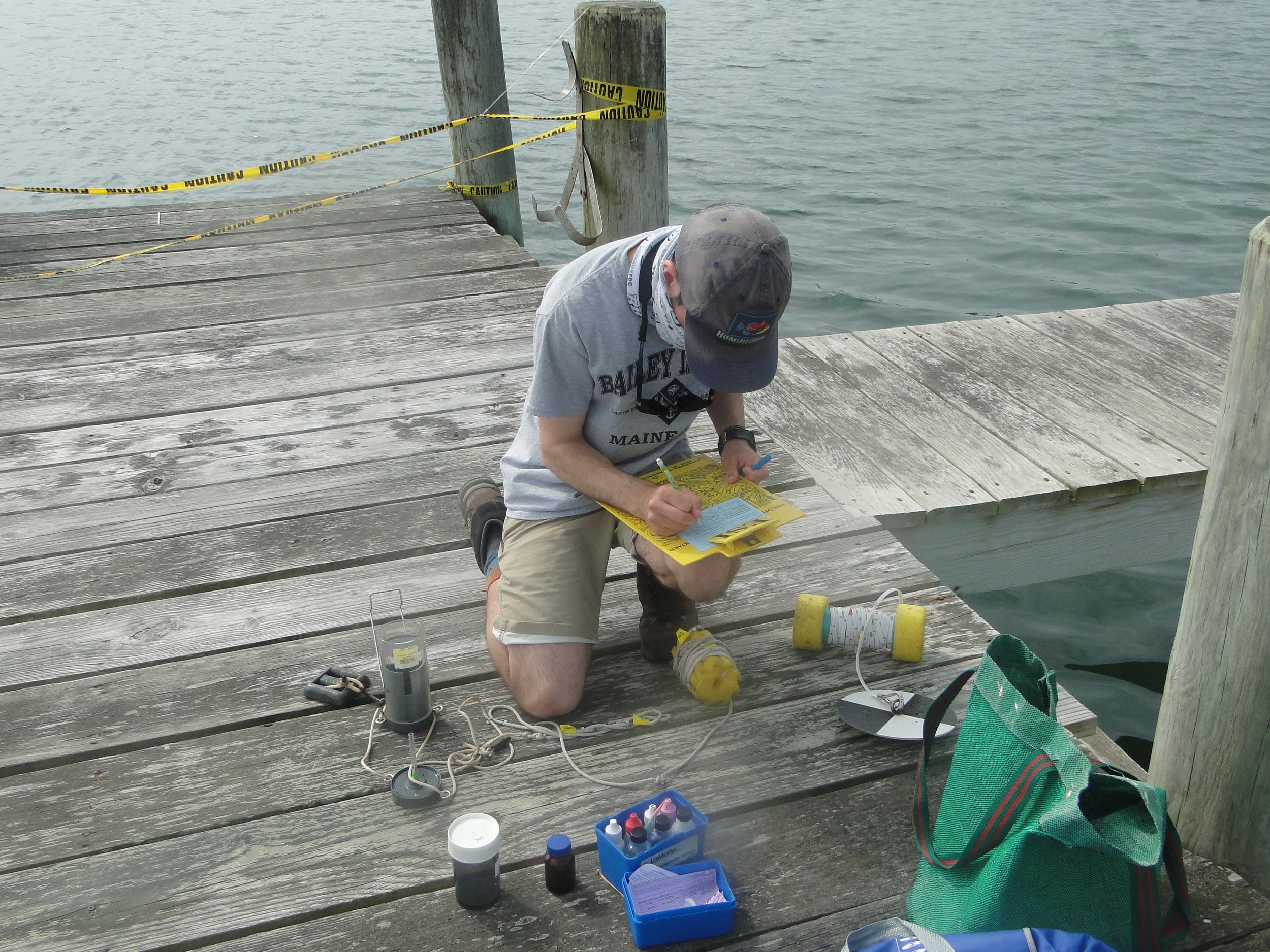
FISM Plan: Coastal Construction
The FISM Coalition is hoping the community will be stewards of this important resource. Learn more about how individuals can be champions of their waters!
PC: Connor Jones
A carefully constructed dock
Saves your seagrass
and saves your waters!
-
Eelgrass requires a significant amount of sunlight for photosynthesis to create energy and grow, making light availability one of the more important factors in determining seagrass survivability [1,2,3]. Light may be limited from reaching the eelgrass from structures on or above the water (ex. docks) and from high levels of turbidity in which high levels of sand or sediment are suspended in the water making it murky. In both cases, the eelgrass suffers from a lack of light and subsequent ability to make energy [3,4].
Shading is also caused by boats. Boat propellers can scour the seafloor creating murky waters. This can be a chronic occurrence around docks, where boating is frequent, and the water is shallow.
-
Without adequate light, eelgrass cannot photosynthesize to produce the energy it needs to grow and reproduce. Less eelgrass means less habitat for fish, more opaque waters, more erosion, and less carbon absorption.
-
Minimize shading from docks and associated boats
Minimize placement of docks over seagrass
Use best practices when building in seagrass meadows
-
Provide Town Trustees with seagrass maps and the latest seagrass data, as it comes available
Document specific best practices and positive examples related to dock and coastal construction and share with community and town officials
Educate homeowners on how docked boats affect eelgrass as well as permanent structures
Maintain a list of qualified surveyors if underwater eelgrass surveys are needed.
-
Burdick DM, Short FT. 1999. The Effects of Boat Docks on Eelgrass Beds in Coastal Waters of Massachusetts. Environmental Management. 23(2):231–240. doi:10.1007/s002679900182.
Fresh, K. B., B. Williams, and D. Pentilla. 1995. Overwater structures and impacts on eelgrass in Puget Sound, Washington. 1995. Proceedings of Puget Sound Research. 2:537-543.
Shafer, D. J., and Lundin, J. 1999. “Design and construction of docks to minimize seagrass impacts,” WRP Technical Notes Collection (TN WRP-VN-RS-3.1), U.S. Army Engineer Research and Development Center, Vicksburg, MS. www.wes.army.mil/el/wrp.
Shafer DJ 2002. Recommendations to minimize potential impacts to seagrasses from single-family residential dock structures in the Pacific northwest. US Army Corps of Engineers, Seattle

